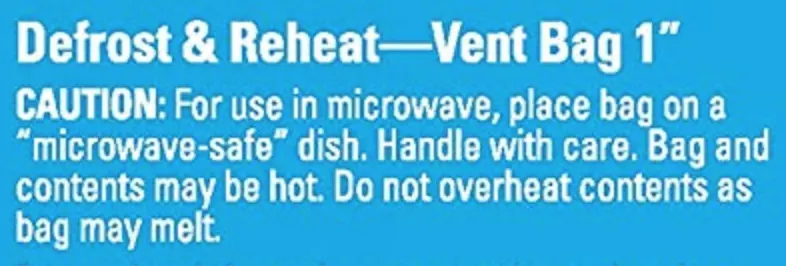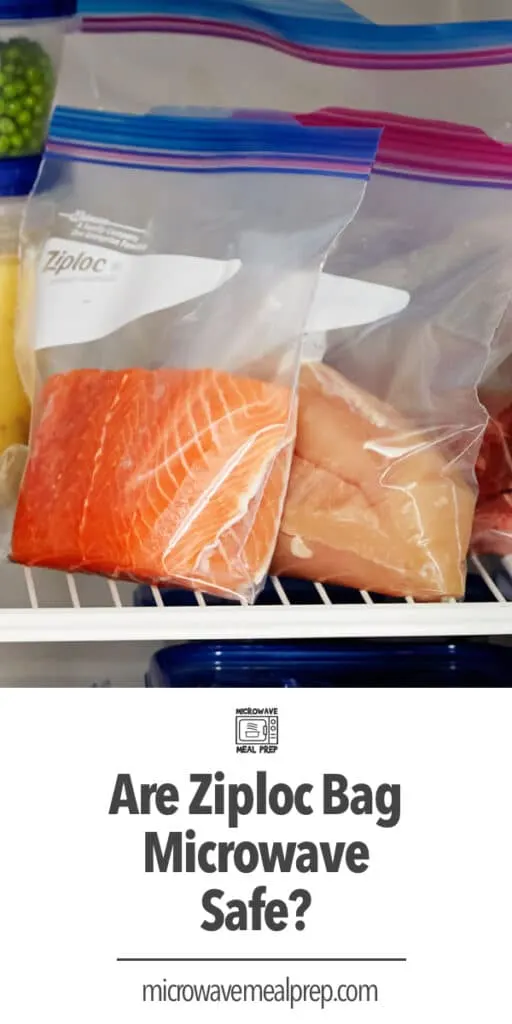Ziploc is a popular brand known to manufacture high-quality Ziploc containers and Ziploc bags commonly used for storing or packaging food. They are tailored to preserve freshness, protect your meal from spoiling, and minimize wastage, but are the plastic bags safe to use in a microwave?
Are Ziploc bags microwave safe? According to the manufacturer, Ziploc bags are microwave safe for defrosting and reheating only. Ziploc bags are not meant for boiling, cooking or steaming food as the high heat may affect the integrity of the plastic.
Luckily, you can put them in a microwave to warm your food, making Ziploc plastic containers and bags versatile tools to have in the kitchen. However, there’s a lot of conjecture spreading around about the safety standards of these plastic bags.
There have been many concerns raised about microwaving plastic. For those questioning the safety of using Ziploc bags to reheat food, then this post is going to explore the issue.
This article seeks to make it clear if these plastic bags are safe to use in a microwave or not. Answered below are frequently asked questions about Ziploc bags and if they are microwave safe or not.
Is it safe to microwave a Ziploc bag?
Microwaving a Ziploc bag is very safe as long as you follow the manufacturers guidelines. These bags and containers have been designed with safe heating in the microwave in mind.
When label directions are followed, Ziploc® brand products can be used with confidence. All Ziploc® brand Containers and microwavable Ziploc® brand Bags meet the safety requirements of the U.S. Food and Drug Administration (FDA) for temperatures associated with defrosting and reheating food in microwave ovens, as well as room, refrigerator and freezer temperatures.
https://ziploc.com/en/Sustainability-and-Safety/
They meet the quality and safety standards of the FDA for chemical, toxicity, and melting characteristics. While Ziploc bags are safe for microwaving, the manufacturer has highlighted the risks involved when these bags are not used correctly.
One such warning is about overheating the bag. Ziploc bags are ideal only for reheating and defrosting meals. If you want to cook using these bags in a microwave, then don’t think of it.
As a result, steaming food is definitely not recommended.
As strong as they seem to be, Ziploc bags have a melting point of approximately 90.5 degrees C or 195 degrees F. If you cook food, it means that this temperature will exceed that limit to 100 or above, causing the bag to melt or warp which degrades its integrity and jeopardizes your food safety.
In case Ziploc bags melt, chemical compounds will be released into your food and enter your body cells after consuming it. Dangerous chemical compounds commonly used to make plastic are known to cause cancer.
The good news is that Ziploc bags have been manufactured with safety standards in mind. You only need to use it the right way to avoid these hazardous health concerns.
Is it safe to reheat food in a Ziploc bag?
You can rest easy that reheating food in a Ziploc bag is safe for microwave use. The reason is that Ziploc bags are dioxin-free, BPA-free and designed for safe reheating in the microwave.
Confirm this safety measure before using these bags for reheating food. Most of the Ziploc bags are labeled microwave-safe as inscribed on the packaging.
You will also note that they are FDA-approved. Furthermore, Ziploc bags are perfectly safe for defrosting frozen meals as these bags don’t release harmful chemicals into your food when reheated at medium to low temperatures for short microwave durations.
However, you must note that continuous reheating of food in a Ziploc bag is highly prohibited. Why? Steam can accumulate in the bag, initiating melting and rupturing.
To help avoid pressure and steam buildup, ensure the corner of the bag opening is opened around one inch to allow steam or pressure to escape. When reheating the Ziploc bag in a microwave, use a microwave-safe dish and place the bag with contents inside on top as instructed by the manufacture.

Handle with care. Bag and contents may be hot. Do not overheat contents as bag may melt.
Additionally, when reheating meals with high sugar or fat content like cheese, bacon, and pastries, be extra cautious because they can accelerate high temperatures. Fat and sugars have a high heat threshold than boiling water that caps at 100 degrees Celsius or 212 degrees Fahrenheit.
To help keep harmful bacterial at bay, always heat leftovers to 74 degrees C or 165 degrees Fahrenheit.
Are plastic bags microwave safe?
Microwaving food in a Ziploc bag is safe as long as it is labeled as microwave safe. However, there are always health risks and concerns when microwaving plastic.
If you heat or cook with high heat over extended durations of time, the plastic bag may melt and release harmful chemicals that can possibly leach into your meal. Soft plastics melt at low temperatures, which is a risk that many are not will to take a chance on.
Luckily, there are options of plastic bags ideal for boiling or heating food. Specific plastic bags have been recommended due to their FDA-approved and microwave-safe labeling.
Before getting this approval from the FDA, the plastic bags have to undergo extensive testing and analysis. This is to ensure toxic compounds, melting temperatures, and other acidic and heat conditions are bearable to human health.
One of the compounds known to have safety issues is the BPA (Bisphenol A). This is a chemical compound employed in creating certain kinds of plastics like plastic cups, water bottles, and plastic wraps.
The compound also possesses a structure that resembles that of estrogen. Thus it can connect with the estrogen hormone and influence body functions like reproduction, cell repair, growth, and energy levels.
The type of plastic bags developed using polycarbonate will release Bisphenol A when exposed to high temperatures. Undoubtedly, this is a dangerous chemical often found in a take-out container, plastic plates, and cling wraps.
Microwavable plastic manufactures have been using BPA-free plastic for many years. In contrary, single use disposable containers are not recommended for heating and have gotten away with using BPA in the synthetic compounds.
Besides, plastic bags created using PVCs must be avoided when heating food because they possess dioxin. This is a chemical compound known to cause cancer when exposed to extreme temperatures.
The plastic bags safe for microwaving are the ones created using both low and high-density polyethylene. They are denser kinds of plastics compared to others; therefore, they can be safer in higher temperatures.
Ziploc plastic bags are a safe option because they are manufactured using polyethylene. This is a compound that lacks additives and is always 100% free from dioxins and BPA.
Are sandwich bags microwave safe?
Sandwich bags are another type of plastic bag manufactured by Ziploc. They are also microwave safe when following the manufacture suggested instructions.
However, if the sandwich bag comes in a standard plastic bag that is not labeled as such, then you should avoid using it in the microwave. Not all types of brown or plastic bags can be microwaved.
Be sure that the sandwich bag has a safety label on the packaging that indicates microwave-safe. Furthermore, remember that Ziploc brand plastic bags are recommended for reheating and defrosting only, not for cooking or steaming.

Things to know about microwave safe Ziploc bags
Ziploc bags are a brand name product that are ideal for reheating and defrosting food. They are developed using polyethylene, a compound that lacks harmful chemicals like dioxin and BPA.
The specifically formulated plastic bags are FDA approved for safe use in the microwave when manufacturer guidelines are accurately followed. Therefore, you can rest easy when using them for reheating and defrosting purposes.
Just remember that these bags come with risk issues that affect your food or your body if not utilized correctly. Keep the following in mind to avoid these issues:
- Always check the safety standards for the bag as indicated on the packaging.
- Only utilize Ziploc bags for defrosting or reheating.
- Place the Ziploc bag on top of a microwave safe place before nuking.
- Avoid heating food above 90 degrees Celsius or 195 degrees Fahrenheit.
- Have a small opening at the corner to allow steam pressure or heat to escape
- Avoid heating or reheating foods with high sugar and fat content.
- Do not use Ziploc bags for cooking or steaming food.
After taking into consideration all of the context above, it remains clear that using a microwave safe container made of glass or ceramic seems like a better choice for cooking and reheating food.
You may have experience microwaving Ziploc bags without any ill effects. However, if you question using Ziploc bags in a microwave even though they are labeled as microwave safe, then maybe it’s time for a change.
